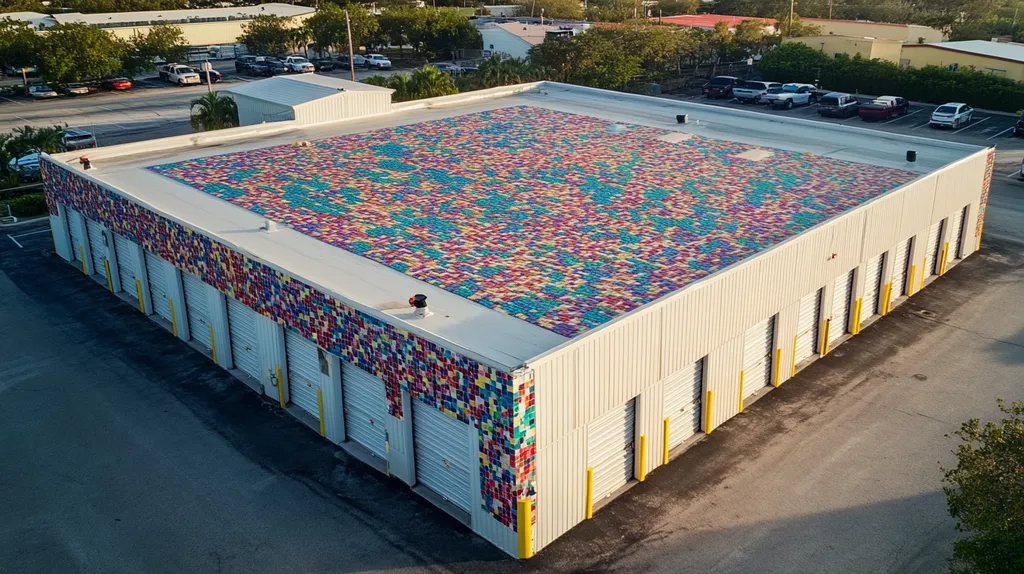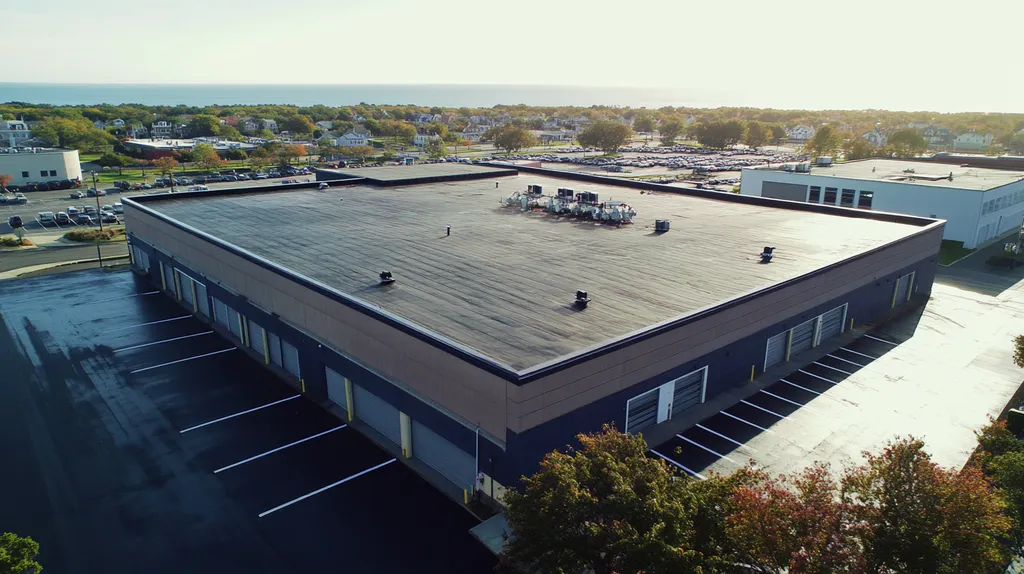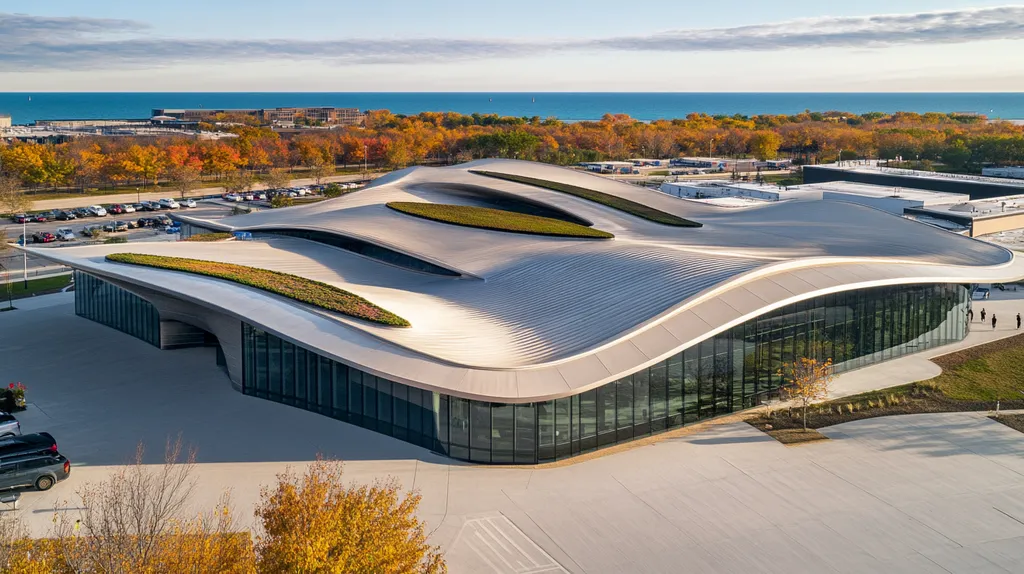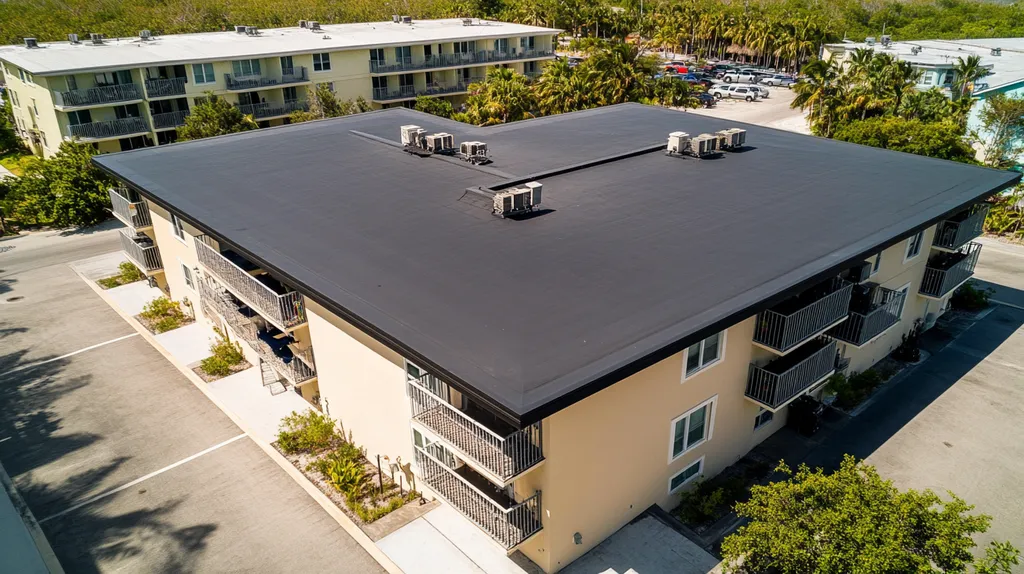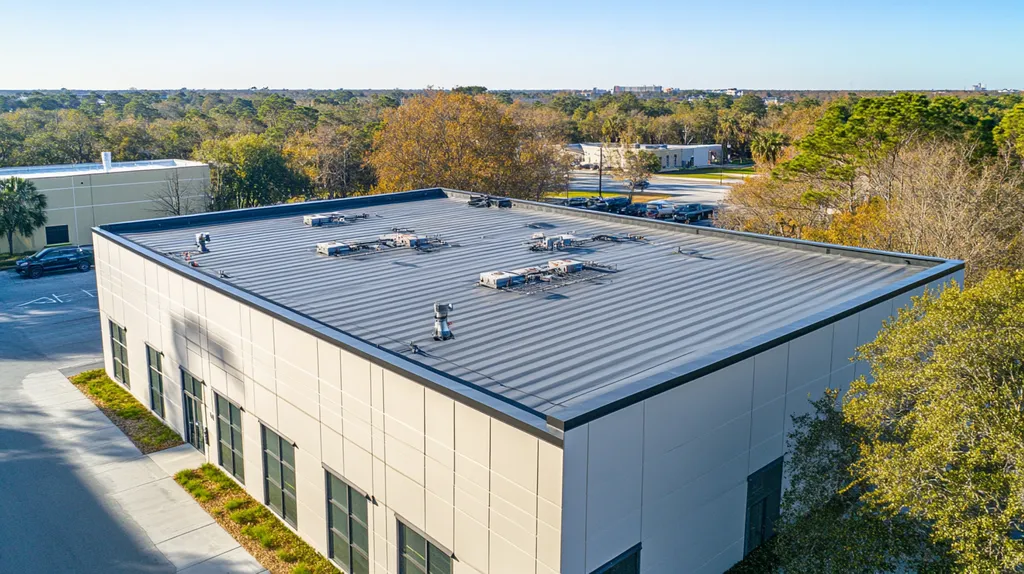Over 40% of commercial roof coatings fail prematurely due to inadequate pre-application inspections, resulting in millions of dollars in damage annually. This preventable issue continues to plague property owners and facility managers across the industry.
While coating applications promise enhanced protection and energy efficiency, rushing through or skipping crucial inspection steps can lead to catastrophic failures. From compromised structural integrity to voided warranties, the consequences of poor preparation extend far beyond immediate repair costs.
This article examines the critical role of thorough inspections in successful roof coating projects, addressing common misconceptions and providing evidence-based solutions for commercial property professionals.
SECTION 1: COMMON MISCONCEPTIONS
Many property owners and facilities managers overlook the importance of thorough inspections before applying a roof coating, which can lead to costly outcomes. In fact, a significant percentage of roofing failures can be traced back to minor issues that were left unattended prior to coating. Understanding the importance of these inspections is crucial; misinformation can lead to early roof deterioration and unexpected expenses. This section will tackle three prevalent misconceptions that pose risks to commercial roofs, empowering decision-makers to make informed choices.
Ignoring Minor Issues Before Coating
It’s a common belief that small leaks or minor surface damage are inconsequential prior to coating a roof. However, this misconception can prove hazardous, as these minor flaws can worsen over time. For example, a tiny crack can permit moisture to seep in, ultimately causing internal structures to rot and compromising the roof’s overall integrity.
If these issues are left unaddressed, the coating may initially seem effective, but underlying problems could undermine its performance. A proper bond may not form, leading to premature failures. Routine inspections can catch and fix these small flaws before they develop into significant issues.
Property owners should prioritize comprehensive inspections that evaluate the entire roof system, identifying vulnerabilities that might otherwise be overlooked. Investing time to address minor defects can significantly prolong the roof’s lifespan and save considerable financial resources in the long run.
Ultimately, proactive maintenance is far more economical than waiting for larger issues to surface. By emphasizing prevention, property managers can ensure their roofs remain in excellent condition after coating, steering clear of unplanned expenses.
Assuming All Roofs Are Equal
A frequent misconception is that all commercial roofs can utilize the same coating techniques and materials. This false assumption fails to recognize the distinct characteristics of different roofing systems. For instance, TPO, EPDM, and built-up roofing each possess unique properties that influence their compatibility with various coatings.
Choosing the wrong coating can lead to adhesion problems, severely impacting the roof’s longevity and performance. Each type of roofing material requires specific preparation and treatment tailored to its unique needs. For example, a coating designed for a metal roof may not function adequately on a single-ply membrane.
Grasping these differences is key to achieving successful project outcomes. Inspections should assess the type and condition of the existing roofing material before any coating application begins. A knowledgeable inspector can help property managers avoid the pitfalls of a one-size-fits-all approach.
Recognizing that every roof system has its specific requirements promotes informed decision-making, enhancing both the effectiveness of the coating and the longevity of the roof. Customized solutions can lead to better roofing performance and reduced maintenance costs.
Skipping Inspections for New Roofs
Some property owners mistakenly think that newly installed roofs do not require inspections before coating. This belief can lead to significant expenses, as new roofs may still have installation defects or surface flaws that necessitate attention. Just because a roof is new doesn’t mean it is free from potential issues.
For instance, improperly sealed seams or unaddressed edge conditions may compromise a new roof’s structural integrity. These problems can result in moisture intrusion, often unnoticed until after the coating is applied. Conducting a proactive inspection can reveal these hidden flaws, ensuring the roof is ready for the best possible application of coating.
A thorough inspection can be invaluable, enabling early detection and correction of any potential problems with new roofs. This approach not only supports the maintenance of associated warranties but also helps prevent future complications.
Neglecting inspections can lead to higher long-term costs and jeopardize the roof’s reliability. Staying diligent, even with new installations, significantly enhances roof performance and lifespan.
SECTION 2: PRACTICAL IMPLICATIONS
Thorough inspections before applying a coating to commercial roofs are not just advisable; they are essential for safeguarding investments. Studies reveal that over 30% of roof coatings fail prematurely due to unaddressed pre-existing issues. Routine evaluations not only extend a roof’s lifespan but also protect valuable facility assets and enhance energy efficiency—key factors in managing operational costs. This section delves into the vital implications of roof inspections concerning lifespan and durability, structural integrity, and energy efficiency.
Impact on Roof Lifespan and Durability
Skimping on inspections before coating can result in serious, lasting damage to a roof. Hidden leaks or structural weaknesses lead to accelerated wear, putting property owners at risk of paying for a coating that quickly fails—essentially wasting their investment.
Inspections uncover critical issues like blistering, moisture buildup, and membrane deterioration. Tackling these problems beforehand not only prolongs the roof’s life but also ensures proper adhesion of the coating. Ignoring underlying conditions typically results in an average reduction of five years in roof lifespan.
Additionally, failing to inspect the roof prior to coating can void warranties. Many manufacturers mandate proof of a professional inspection before coating application, adding unexpected costs and logistical hurdles for facility managers.
In summary, timely inspections are crucial for enhancing durability and lifespan, preventing frequent and costly repairs and replacements, thus saving time and money in the long run.
Effects on Structural Integrity and Safety
The condition of a roof directly impacts a building’s structural integrity. Coating a roof with undiscovered structural weaknesses can jeopardize safety for occupants. For example, roofs with rusting steel decking or decaying wood can’t bear the additional weight of coatings, posing risks of collapse.
Conducting timely inspections ensures these structural issues are identified before any coating application. Ignoring these potential pitfalls not only invites physical damage but also exposes property owners to liability. A roof collapse could result in serious injuries and costly lawsuits.
Moreover, inspections can provide insights into humidity levels and ventilation within the roofing system. Poor air circulation may lead to mold or mildew growth, creating health hazards for building occupants. By verifying the soundness of the roof prior to coating, property managers can mitigate these dangerous conditions and create a safer environment.
Ultimately, addressing structural concerns through thorough inspections protects both building integrity and the well-being of those inside.
Influence on Energy Efficiency and Costs
Energy efficiency is a significant benefit of roof inspections before coating application, yet it is often overlooked. An uninspected roof may have vulnerabilities that allow air leaks, driving up heating and cooling costs. Inspections play a crucial role in identifying these energy-wasting issues.
For example, a recent inspection revealed that fixing ventilation leaks could lower energy costs by up to 25%. Proper sealing and insulation determined through a thorough inspection can significantly enhance the roof’s performance and efficiency.
Additionally, a well-maintained roof surface reflects solar energy more effectively, reducing the need for air conditioning during warmer months. This improved efficiency translates to lower monthly energy bills—a vital consideration for budget-conscious property owners.
In conclusion, proactive inspections provide immediate and long-term financial benefits, making enhanced energy efficiency an essential component of commercial roofing strategies.
SECTION 3: COST OF MISINFORMATION
Neglecting thorough roof inspections can lead to dire financial consequences for commercial property owners. Research indicates that undetected leaks can inflate repair costs by as much as 50% when finally addressed. The reality is, failing to follow proper inspection protocols can erode budgets and diminish long-term asset value significantly.
Financial Consequences of Undetected Leaks
When a roofing system fails, the costs associated with undetected leaks can mount quickly. A small, unnoticed leak can escalate into substantial structural damage, leading to repairs that far exceed the original roofing budget. Insurers often track these expenses, and a history of leak-related claims can dramatically increase premiums.
For instance, repairing a minor leak might only require a few hundred dollars initially, but if left untreated, the cost can soar into thousands once insulation, drywall, and electrical systems are compromised. This financial escalation can strain cash flow and disrupt operational budgets.
Moreover, businesses could experience revenue losses during urgent repairs. If a leak affects critical areas of a facility, immediate attention may necessitate a partial or complete shutdown of operations. Therefore, investing in pre-coating inspections is a cost-effective strategy.
Ultimately, proactive inspections help preserve a property’s value while avoiding unforeseen expenses. By addressing issues proactively, property owners can mitigate risks and allocate their maintenance budgets more effectively.
Increased Maintenance and Repair Costs
Dependence on inadequate information or skipping inspections can lead to spiraling maintenance costs. When a coating is applied over a compromised roof, symptoms such as blisters or bubbling may not emerge until they reach a critical stage. At this point, the repairs needed can multiply.
For example, poorly applied coatings can worsen existing issues, creating a cycle of continual maintenance. Each repair compounds into a financial burden that could have been avoided simply by conducting a thorough inspection earlier.
Furthermore, routine maintenance can become complicated when underlying problems are concealed by a new coating. Without understanding the actual roof condition, facilities managers may opt for ineffective maintenance strategies, increasing labor and material costs significantly. This inefficiency places a heavy strain on budgets.
In summary, proactive support from roofing professionals through regular inspections can significantly mitigate the risks associated with skyrocketing repair costs. A targeted approach to roof health proves more economical over time.
Potential for Warranty Voidance
Most roofing materials and coatings come with warranties designed to offer substantial financial protection. However, failing to conduct and document proper inspections can void these warranties. Many manufacturers require evidence of regular inspection and maintenance for warranty coverage to remain valid.
Imagine a scenario where a serious malfunction arises from a coating failing prematurely. If inspections were skipped, manufacturers could dispute warranty claims, leaving property owners liable for all repair expenses. This exemplifies the urgent need for maintaining an accurate inspection record.
Moreover, property owners must understand the specific conditions tied to warranties. Some manufacturers stipulate inspections to maintain coverage, and ignorance of these requirements can result in unexpected financial consequences. Each lapse in documentation can translate into thousands of dollars lost when issues arise.
In conclusion, regular inspections transcend mere best practices; they are essential for preserving warranty rights. Property owners should recognize that a small expense today can yield significant savings in the future.
SECTION 4: REALITY CHECK
Leaks pose a significant threat to the integrity of commercial roofs. The urgency for early detection cannot be overstated, as studies show that 80% of roofing failures stem from unnoticed leaks. This section emphasizes the critical nature of proactive inspections and the substantial benefits they provide in enhancing roof longevity and overall performance.
The Importance of Early Leak Detection
Detecting leaks early is essential for preserving the structural integrity of commercial roofs. Small leaks can develop into major issues if they are not taken care of swiftly. Research indicates that failing to address minor roof problems can result in repair costs increasing by as much as 50%.
Regular inspections are pivotal in identifying leaks before they escalate. Today’s advanced moisture-detection technologies can uncover hidden leaks, dramatically improving detection accuracy. Proactive leak detection protects property owners from incurring high repair expenses down the road.
Beyond financial implications, leaks can contribute to serious health risks, such as mold growth. Mold not only endangers the health of occupants but also exposes property managers to legal liabilities. Thus, prioritizing early leak detection is essential for protecting both financial assets and the well-being of building tenants.
By implementing a routine inspection schedule, property owners can sidestep the pitfalls of overlooked leaks. This approach not only extends the life of the roof but also helps maintain a healthier environment for employees and residents.
Understanding Local Climate and Weather Impact
The local climate significantly influences the effectiveness and condition of roofing systems. Areas experiencing heavy rainfall or harsh winters face distinct challenges that need to be understood. Awareness of these climatic factors enables owners to make informed decisions regarding their roofing needs.
For instance, roofs located in regions with heavy snow loads require unique assessments compared to those in dry climates. Understanding how local weather impacts roofs allows property managers to develop customized maintenance strategies.
Furthermore, without adequate oversight, weather-related damage can worsen over time. High winds, for example, can dislodge roofing materials, leading to vulnerabilities and leaks. Regular inspections become even more critical in these conditions to manage and mitigate potential risks.
Being attuned to local weather patterns allows for timely and necessary preventive measures. This proactive approach not only protects roofing investments but also aligns with local building codes and regulations.
Role of Regular Inspections in Preventive Maintenance
Regular inspections form the backbone of an effective preventive maintenance plan. Establishing a routine inspection schedule can uncover signs of wear before they transform into costly repairs. Property managers who emphasize inspections can tailor their maintenance strategies effectively based on up-to-date information.
Many roofing systems naturally endure wear from sunlight and environmental exposure. Routine inspections often detect the need for minor yet crucial repairs that can be addressed before they escalate into serious issues.
Additionally, ongoing inspections are vital in extending the roof’s lifespan. Research indicates that well-maintained roofing systems can last up to 20% longer than those that are neglected. Investing in a regular inspection routine leads to substantial long-term savings and superior roof performance.
Ultimately, instituting a consistent inspection philosophy cultivates a proactive maintenance culture. It empowers property managers to fully understand the condition of their roofs and make informed decisions that safeguard their investments.
SECTION 5: EVIDENCE-BASED ALTERNATIVES
Conducting thorough inspections before applying a coating to a commercial roof is not just advisable; it is essential. Failing to carry out these inspections can lead to severe issues such as water infiltration, decreased energy efficiency, and hefty repair bills. Studies indicate that inadequate surface assessments contribute to over 30% of early roofing failures. By embracing evidence-based alternatives in inspection practices, property owners can ensure both the longevity and performance of their roofing systems, ultimately safeguarding property value. This section highlights the imperative nature of routine inspections, the significance of selecting advanced tools, and the advantages of adopting intelligent monitoring systems.
Implementing Routine Inspection Schedules
Establishing a consistent inspection schedule is key to effective roof maintenance. Regular inspections allow for the early identification of issues like leaks or material deterioration, helping to avert costly repairs before they escalate into major problems.
Property owners should prioritize seasonal inspections, particularly in regions with extreme weather. For instance, conducting inspections prior to winter can reveal vulnerabilities that might be exacerbated by snow and ice buildup. Tailoring inspections to the specific roofing materials in use can also address unique challenges associated with each type.
Incorporating inspections into routine facility management promotes a proactive maintenance culture. This not only curbs the frequency of roofing failures but also mitigates operational disruptions caused by unexpected repairs.
Moreover, keeping a detailed record of inspections creates a valuable resource for future maintenance decisions. This documentation empowers facility managers to make informed choices that enhance overall roof performance throughout its lifespan.
Choosing the Right Inspection Tools and Technology
Selecting appropriate inspection tools and technology is vital for conducting accurate roof assessments. Modern innovations such as drones and thermal imaging techniques provide unparalleled insights into roof conditions that traditional methods may miss.
Drones can efficiently cover expansive areas, delivering high-resolution images that highlight potential issues. Meanwhile, thermal imaging effectively identifies moisture trapped beneath the roofing membrane, an essential aspect when evaluating its integrity. These advanced technologies not only streamline the inspection process but also significantly improve assessment quality.
Additionally, employing handheld moisture meters enables the pinpointing of specific areas of concern, allowing for targeted interventions. Utilizing a combination of these tools gives facility managers a comprehensive understanding of their roofs’ conditions, facilitating better decision-making.
By integrating these technologies into regular inspection routines, long-term maintenance costs can be substantially reduced. Accurate evaluations ensure that the right treatments are applied, extending the overall service life of the roof.
Benefits of Intelligent Rooftop Monitoring Systems
Intelligent rooftop monitoring systems are revolutionizing roofing management. These systems offer real-time data concerning roof conditions, allowing facility managers to respond promptly to emerging issues. Continuous monitoring can quickly detect leaks and moisture build-up before they lead to significant damage.
For example, sensors can monitor temperature and humidity levels, which serve as indicators of potential problems. This proactive approach minimizes the need for reactive repairs and allows maintenance schedules to be optimized based on real-time data.
Furthermore, these monitoring systems can enhance energy efficiency. By identifying areas with thermal loss, they inform necessary insulation improvements, resulting in lower utility costs and a more sustainable building overall.
Ultimately, investing in intelligent monitoring technology enriches asset management capabilities. The insights gleaned support better budget forecasting and maintenance planning, ensuring that facility managers allocate resources effectively and strategically.
SECTION 6: TEST AND VERIFY
Thorough inspections before applying a coating to commercial roofs are absolutely vital. Skipping this critical step can lead to expensive failures and numerous insurance issues down the line. The National Roofing Contractors Association highlights that improper preparation can cut a roof’s lifespan by up to 30%. To ensure the longevity and performance of a roof, it is essential to conduct comprehensive assessments, verify findings with solid data, and comply with industry regulations.
Conducting Thorough Roof Assessments
A complete roof assessment is the cornerstone of a successful coating application. It serves to identify existing problems like leaks, membrane damage, and structural issues. In addition to visual inspections, diagnostic tests such as moisture surveys should evaluate any hidden problems.
Understanding the age of the roof and its maintenance history can also serve as a critical indicator for necessary actions. For example, an older roof showing signs of significant wear might need more than just a fresh coating; it could require repairs or even a full replacement. Comprehensive assessments guide material selection and lay the groundwork for future maintenance.
Documenting all findings during this process creates a valuable reference for future decisions. These records help in strategic planning for maintenance, upgrades, and serve as crucial evidence in case of disputes. Detailed assessments empower property owners to make informed decisions, thereby minimizing risks and costs.
Verifying Inspection Findings with Data
Validating inspection findings with data is essential before applying any coating. Soil and moisture tests can deliver quantitative evidence to support visual assessments. Without concrete data, property owners may risk applying a coating that won’t adhere properly or deliver the expected protection.
For instance, infrared thermography can uncover moisture trapped beneath roofing membranes—issues that are often invisible during standard inspections. Equipped with this crucial information, property managers can decide to either repair or proceed with a coating based on data-driven insights.
Working with certified professionals who leverage advanced technology enhances the accuracy of assessments. Employing these data-driven techniques fosters a proactive, transparent approach to roof management. The objective is not merely to cover problems but to significantly improve overall roof performance and lifespan.
Ensuring Compliance with Industry Standards and Regulations
Adhering to industry standards is imperative when preparing for a roof coating application. Non-compliance can lead to serious consequences such as voided warranties and legal ramifications. Guidelines set by organizations like the American National Standards Institute (ANSI) provide safety and efficacy benchmarks in roofing practices.
Additionally, compliance with local building codes safeguards property owners from legal liabilities. Different regions may impose specific requirements concerning materials, installation methods, and environmental considerations. For example, opting for environmentally friendly coatings not only fulfills compliance but also enhances public image.
Moreover, certified professionals ensure all contractor practices align with industry norms. Hiring qualified experts who are well-versed in current regulations instills greater confidence in property owners regarding roofing decisions. Compliance not only protects investments but also fosters a sense of trust and reliability for sustainable roof management.
The Bottom Line
With over 40% of commercial roof coatings failing prematurely due to inadequate inspections, the stakes for property owners have never been higher.
The evidence is clear: thorough pre-coating inspections are not optional, but essential for protecting substantial roofing investments and avoiding catastrophic failures.
From structural integrity and energy efficiency to warranty protection and regulatory compliance, every aspect of roof performance depends on proper inspection protocols.
Modern technology, including thermal imaging and intelligent monitoring systems, now provides unprecedented capabilities to detect and prevent issues before they escalate into costly repairs.
Property owners who implement comprehensive inspection programs, leveraging both advanced tools and industry expertise, position themselves to maximize their roofing assets’ longevity while minimizing long-term costs.
FREQUENTLY ASKED QUESTIONS
Q. Why are inspections important before coating a commercial roof?
A. Inspections reveal minor issues that could worsen if unaddressed, leading to costly failures. They ensure that the roof’s condition is stable enough to support a new coating, ultimately extending its life and preventing unforeseen expenses.
Q. How do inspections affect the lifespan of an industrial roof?
A. Inspections identify structural weaknesses or leaks before they escalate, allowing for timely repairs. By addressing these vulnerabilities, property owners can significantly enhance the roof’s durability and extend its lifespan, saving money in the long run.
Q. What happens if I skip inspections for a new commercial roof?
A. Skipping inspections on new roofs can lead to undetected installation defects that may compromise performance. This oversight could result in costly repairs and invalidated warranties, making inspections critical even for newly installed roofs.
Q. How do poor inspections increase costs for commercial roofs?
A. Poor inspections can conceal issues that escalate into major repairs later, inflating costs significantly. When underlying problems go unnoticed, the financial burden from repairs and maintenance can greatly outweigh the initial inspection costs.
Q. Can energy efficiency be impacted by coating application without inspections?
A. Yes, coating applications without inspections may overlook air leaks or moisture issues. These vulnerabilities can result in inefficient thermal performance, leading to increased energy costs and reduced system effectiveness.
Q. How can intelligent rooftop monitoring systems help with inspections?
A. Intelligent monitoring systems provide real-time data on roof conditions, allowing for proactive maintenance. These systems can detect moisture build-up and other issues quickly, preventing costly damage and enhancing overall roof management.
Q. What are the benefits of conducting thorough roof assessments?
A. Thorough assessments identify existing issues, guide future maintenance, and empower informed decision-making. Documenting findings also serves as a reference for future inspections and repairs, ultimately enhancing the roof’s longevity and performance.

